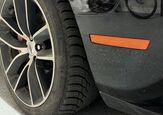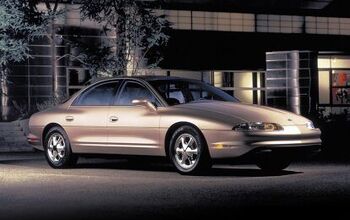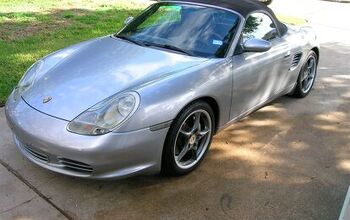Don't Crush That Bug, Hand Me The Pliers

I’m pretty sure that everyone reading this has interests beyond the world of automobiles. As both an observer of and participant in the news and information biz, it’s fascinating for me to see how a story in the automotive media will sometimes percolate into general news outlets, showing up on the front page, print or digital, of your local newspaper (if it’s still in business) weeks after you’ve read about it here at TTAC or at another car enthusiast or news site.
Although automotive blogs have covered this story in the past, news of Homeland Security raids on private individuals to seize 40 Land Rover Defenders that were suspected of not complying with relevant Federal Motor Vehicle Safety Standards have only just started showing up at regional and national news outlets. The Feds claim that the trucks were illegally imported into the United States and then passed off as older than they really were so as to appear to be exempt as being 25 years old or older. Paperwork is alleged to have been falsified and numbers on engine blocks changed. At the same time some owners claim that their Landies are obviously more than 25 years old and claim that their vehicles’ VINs back them up. Owners have about a month to appeal.
This spring I attended the Vintage VW Show in Ypsilanti, Michigan. While there are car shows and events, big and small, that I try to attend every year, serendipity and spontaneity make for good stories, so one year I might go to Camaro Fest and another a VW show. I have to admit, though, that while I’ve never owned a Camaro, I have owned a couple of air-cooled Volkswagen Type IIs, aka Buses, building a slightly hi-po’d engine for the second, so I’m sure many of the people at the VVWS were kindred spirits to me.
There were plenty of rare and interesting cars, photo worthy for sure, ranging from VW Things (including their Opa, an actual Kubelwagen), to split-window Type II Kombi pickups, to Type 34 Karmann Ghias, to a Harlequin edition Golf, but the two cars that really caught my eye appeared to be simple VW Beetles. What got my attention was the fact that they looked so shiny and new compared to most of the cars in the show, and most of their trim that should have been chromed was body color,with some black hardware. When I looked at the placards on their flat glass windshields, I saw that they were both listed as 1998 Mexican Beetles.
When I saw the cars I had the same thought that most of us do when we see a car or truck not made for the U.S. market that’s less than 25 years old: “How did they manage to get it registered?” One car, sort of a dark green-blue, was wearing Michigan license plates. The other MexiBeetle was driven up from Toledo.
At the time, I thought about doing a post on the cars and started looking into how Mexican VW Beetles made it into the U.S. legally or otherwise, but stuff happens and that post never got written. Now that the Feds are seizing grey market vehicles, it seemed like a good time to return to those Hecho en Mexico Vee Dubs.
Now before anyone accuses me of snitching, creating publicity that might result in these cars’ seizure, by now I’ve spoken to both owners and they’re confident that their cars are 100% legal. Also, it’s not like they’re trying to hide them. The cars were on display at a car show open to the public, and you can be sure that if Homeland Security was concerned about black market Beetles from south of the border, down Mexico way, a vintage Volkswagen show is exactly the place they’d be looking for them.
According to the owners, both cars are fully Mexican spec, though supposedly only one of them was actually Hecho en Mexico. Patrick, the Dodge salesman who owns the green-blue car, told me that in fact his car was Hecho en Michigan, one of 13 assembled by a shop in Waterford from all new Mexican parts, including swing axles. Think about that for a second or two. It made economic sense for Volkswagen to save a few pesos using swing axles, something U.S. market Beetles abandoned in 1967 if I’m not mistaken. The car is titled not as a Volkswagen, but rather as an assembled vehicle. It has a Mexican spec fuel injected engine with a catalytic converter and an aftermarket air conditioner.
Apparently there were plans to make many more than just a dozen or so Mexican Beetles in Michigan, with talk of a small assembly plant in the Upper Peninsula, but VW’s decision to kill the Beetle finally in 2003 killed those plans as well. It’s not clear if those plans were related to Nostalgia Motorcars, an Arizona company that announced in 2000 that they were going to sell 10,000 brand new classic Beetles made in Mexico, modified to comply with all DOT and EPA standards.
It’s perfectly legal as far as the state of Michigan is concerned since all the requirements of an assembled vehicle title have been met. None of those requirements say anything at all about emissions or safety standards beyond required on-road equipment, typically regarding lights. However, I suppose to be fully compliant with federal regulations, it would have to have some kind of major component that comes from a Beetle that was imported to the U.S. before those regulations applied.
The owner of the silver car had a different story. He’s the second American owner and he said with certainty that the car was assembled in Puebla, Mexico. He wasn’t sure of the details, but he said that the previous owner spent $8,000 beyond the purchase price to get it legally registered in the United States. Some states, I’ve heard that Maine is one of them, are fairly lax in their vehicle registration processes.
If you’d like air-cooled vintage VWs and you’d like to take a gamble on your house getting raided by the Feds, Patrick had a For Sale sign on his car at the Vintage VW Show. I checked with him and it’s still for sale, sort of. Patrick is more of an American car guy so the Beetle isn’t the only car in his collection, but he’s rather fond of it. He says that it’s a ball to drive. The price would have to be right, but if the offer was close enough, he wouldn’t dicker over $100. Give him a call at 258-701-5581 (yes, he gave me permission to post his phone #). For less than the price of a Yaris, you can drive something that will put a smile on your face, even if it doesn’t make the folks at the DOT or EPA happy.
Ronnie Schreiber edits Cars In Depth, a realistic perspective on cars & car culture and the original 3D car site. If you found this post worthwhile, you can get a parallax view at Cars In Depth. If the 3D thing freaks you out, don’t worry, all the photo and video players in use at the site have mono options. Thanks for reading – RJS

Ronnie Schreiber edits Cars In Depth, the original 3D car site.
More by Ronnie Schreiber
Latest Car Reviews
Read moreLatest Product Reviews
Read moreRecent Comments
- MaintenanceCosts Poorly packaged, oddly proportioned small CUV with an unrefined hybrid powertrain and a luxury-market price? Who wouldn't want it?
- MaintenanceCosts Who knows whether it rides or handles acceptably or whether it chews up a set of tires in 5000 miles, but we definitely know it has a "mature stance."Sounds like JUST the kind of previous owner you'd want…
- 28-Cars-Later Nissan will be very fortunate to not be in the Japanese equivalent of Chapter 11 reorganization over the next 36 months, "getting rolling" is a luxury (also, I see what you did there).
- MaintenanceCosts RAM! RAM! RAM! ...... the child in the crosswalk that you can't see over the hood of this factory-lifted beast.
- 3-On-The-Tree Yes all the Older Land Cruiser’s and samurai’s have gone up here as well. I’ve taken both vehicle ps on some pretty rough roads exploring old mine shafts etc. I bought mine right before I deployed back in 08 and got it for $4000 and also bought another that is non running for parts, got a complete engine, drive train. The mice love it unfortunately.










































Comments
Join the conversation
Considering the millions of $ per year of crop damage caused by Mexican Beetles, I'm surprised that the Department Of Agriculture isn't involved.
You see these from time to time at VW shows. In the late 90's early 2000's there was at least one company who was taking chassis tunnels (where the VIN is stamped) from otherwise rusted out or totaled beetles, and shipping them to Mexico where they were welded into Mexican Beetles. The "1998" Beetle was then imported back into the US as a "197x" Beetle. At VW shows I attended then, this bit of info was not hidden by the company, and deemed completely legal by NJ standards. I always thought it was a little shady though. Most of the ones I saw were red or silver. You can usually tell these pretty easily by little to no chrome trim, body colored bumpers and headlight rings, black plastic door handles, and more modern interior and steering wheels. Yes they are fuel injected, but US Beetles were fuel injected from 1975 on. 99% of the population and I'm sure regulators, wouldn't even take a second look at them and assume these are "70's" Beetles.